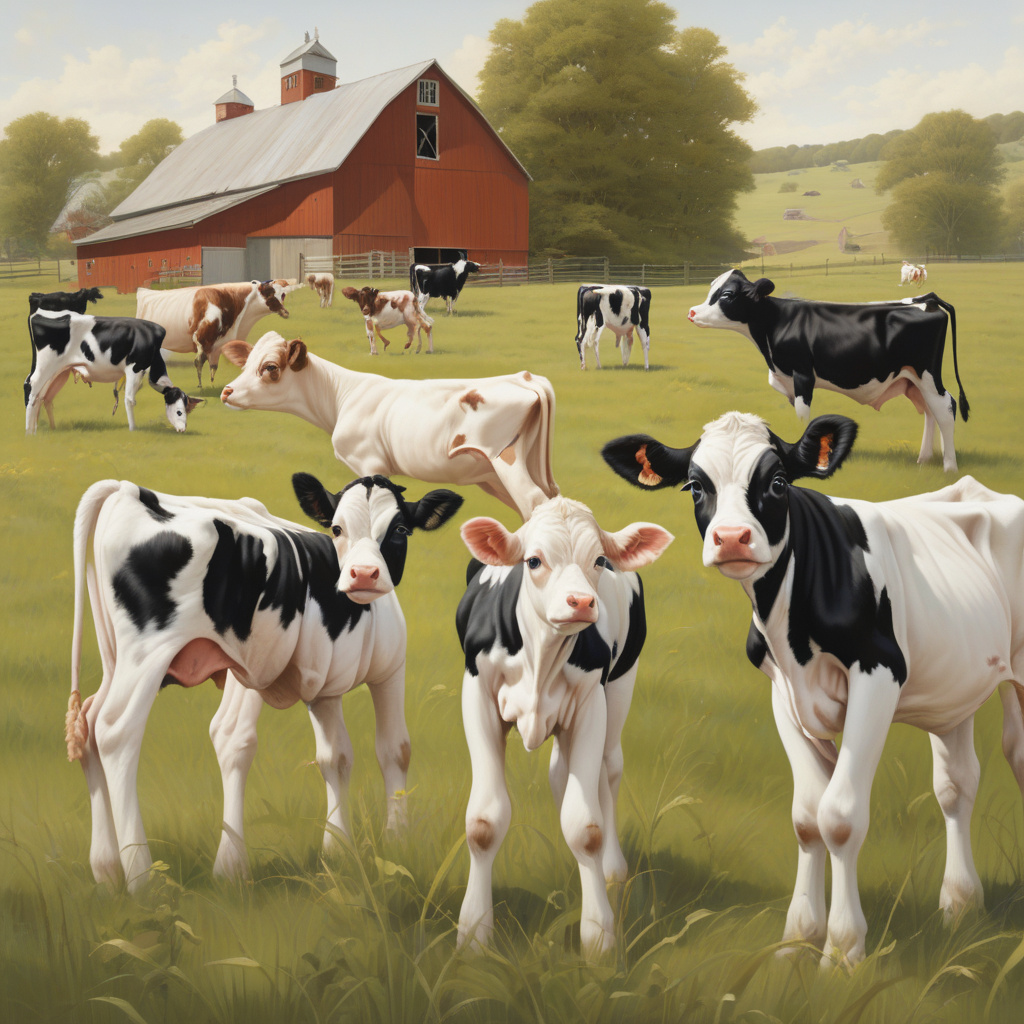The Impact of ‘Milk-Stealing’ Calves: Unraveling the Spread of Bird Flu Among US Cows
A recent study has unraveled the mystery of how the H5N1 avian influenza virus infects cows in the United States, shedding light on a concerning phenomenon. The research, conducted in China, has revealed that calves who steal milk from infected birds may be responsible for the spread of this deadly virus among cattle populations.
The H5N1 avian influenza virus is notorious for its ability to infect a wide range of bird species, including chickens, ducks, and wild birds. However, its transmission to mammals, particularly cows, has puzzled scientists for years. The new study provides valuable insights into this process, highlighting the role of calves in bridging the gap between infected birds and cows.
Cows are not naturally susceptible to the H5N1 virus, but the study found that calves that consumed milk contaminated with the virus from infected birds could become carriers and spread the infection to other cows. This mode of transmission is particularly concerning, as it can lead to large-scale outbreaks among cattle herds.
The findings underscore the importance of biosecurity measures in preventing the spread of avian influenza to other animal species. Farmers and ranchers are advised to implement strict hygiene protocols and ensure that calves are not exposed to contaminated milk or environments where infected birds may have been present.
In addition to the immediate impact on cattle health, the spread of the H5N1 virus among cows poses a significant risk to human health. While the virus is not easily transmitted from cows to humans, close contact with infected animals or consumption of contaminated dairy products could potentially lead to human infections.
To mitigate this risk, health authorities recommend monitoring cattle populations for signs of avian influenza, such as respiratory symptoms, decreased milk production, and sudden deaths. Early detection and rapid response are essential in containing outbreaks and preventing the further spread of the virus.
Furthermore, the study highlights the interconnected nature of disease transmission between different animal species and the importance of One Health approaches in addressing emerging infectious diseases. By understanding the dynamics of virus spread among wildlife, livestock, and humans, researchers and policymakers can develop more effective strategies for disease prevention and control.
In conclusion, the revelation of ‘milk-stealing’ calves as a potential vector for the spread of the H5N1 avian influenza virus among US cows underscores the need for vigilance and proactive measures to protect animal and public health. By addressing the root causes of disease transmission and implementing robust biosecurity protocols, we can minimize the risks associated with zoonotic infections and ensure the well-being of both animals and humans.
bird flu, avian influenza, calves, biosecurity, One Health










